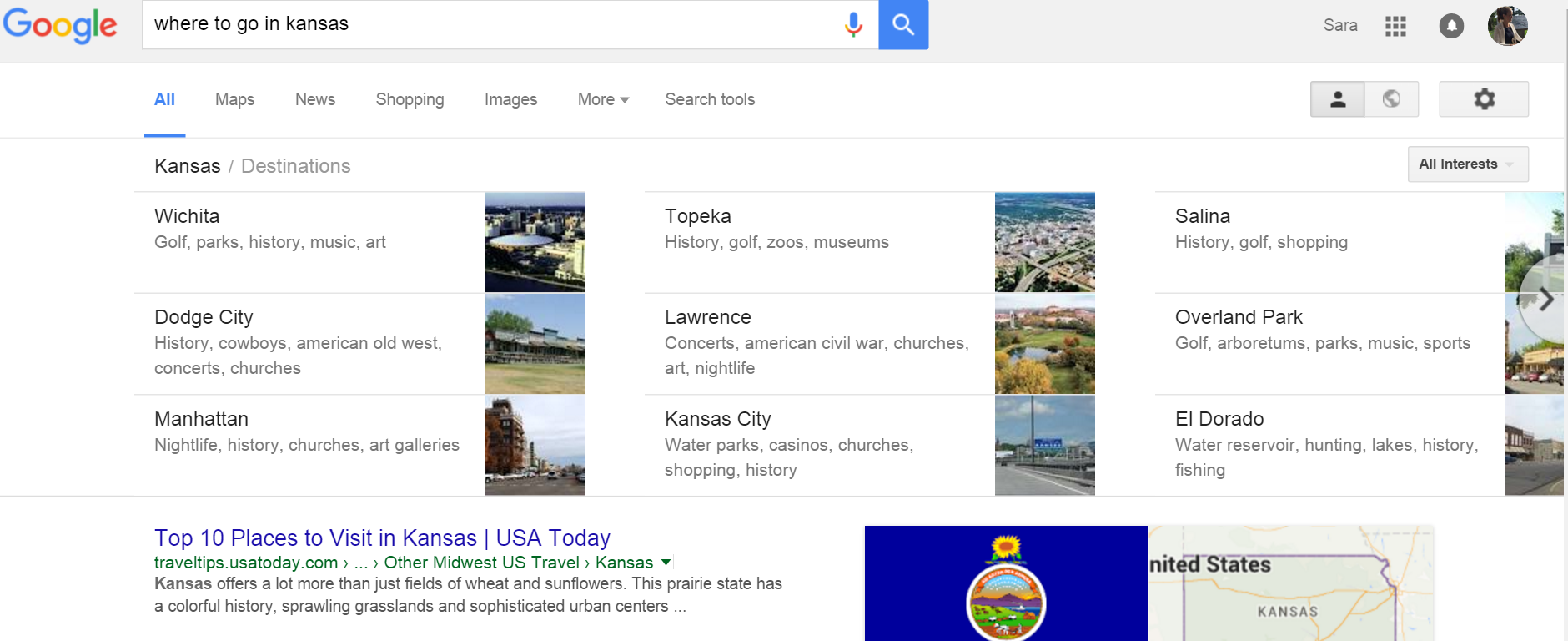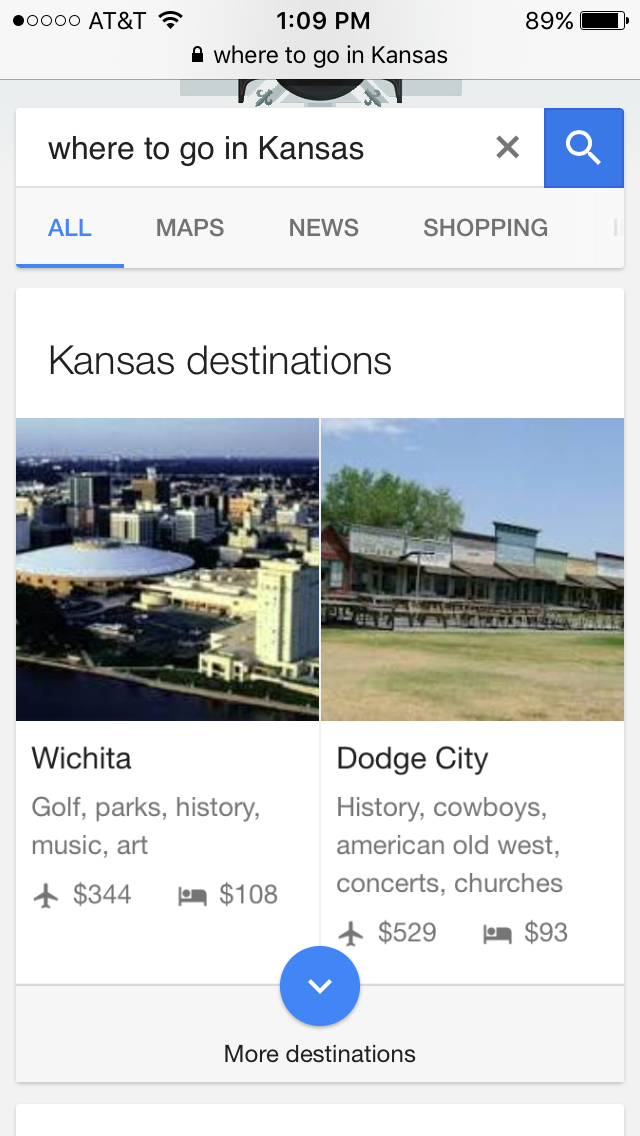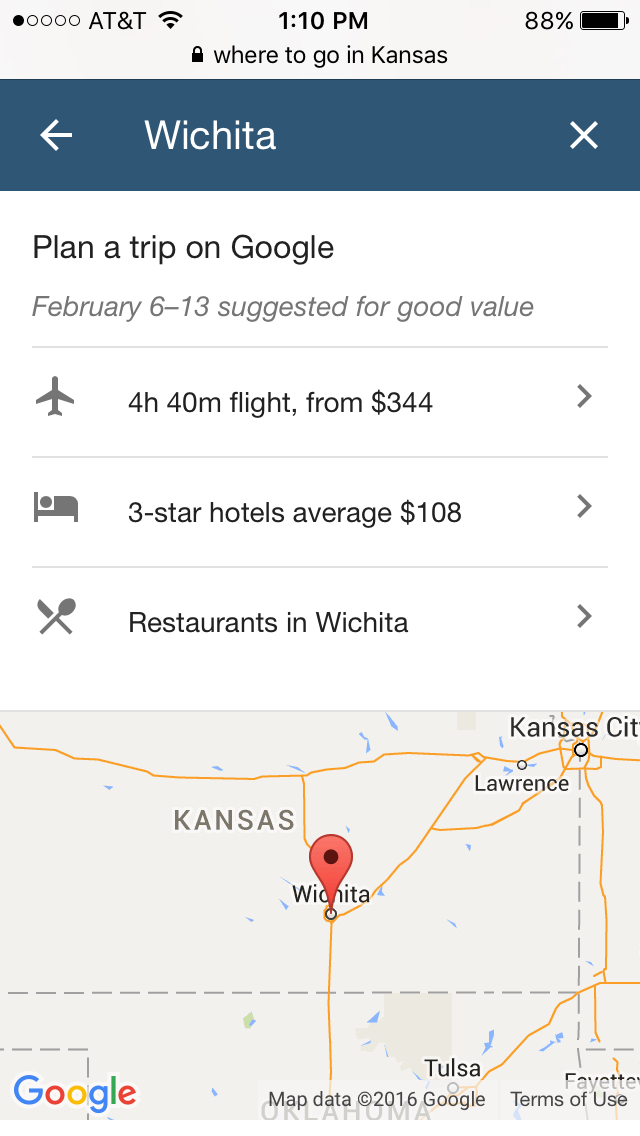By Asher Fusco
Google has found yet another way to harness its wealth of information to provide more information to travelers – the Trip Planning search display. This experience, delivered for certain search queries on both the desktop and mobile platforms, gives users a step-by-step guide to planning travel to a particular destination.
This new search display further reinforces the importance of the hotel website maintaining prime search engine visibility for key terms, and provides another avenue for visitors to find the hotel website via search.
How Does it Work?
Google’s Trip Planning search results appear when users search for terms such as “where to go in Florida,” or “destinations in Arizona.”
Instead of just serving a standard organic results set with the sites you might expect – TripAdvisor, editorial guides, and official travel websites – Google displays at the top of the page a curated collection of destinations within the particular region comprised by the user’s search:
Desktop:
Smartphone:
Google serves Trip Planner results sets to users looking for information on “where to go.”
Once a user chooses a particular city, country, or region from the list, they are displayed an information-packed page on the area. This includes a brief description of the location, a carousel of top sights, a map display, tourism popularity index with average weather, and video content related to the destination.
Most importantly, the page includes links to flights, hotels, and restaurants in the destination:
Desktop:
On smartphones:
On mobile, Google’s Destination guide includes links to hotel, flight, and dining information. When a visitor selects the hotels tab, Google auto-generates a search for “Wichita hotels,” “hotels in Phoenix,” or a similar term.
This automated search is nothing more than a standard organic results set – the same as a user would be shown had they searched for hotel-related terms on their own:

What Does it Mean for Hoteliers?
This development is great news for hoteliers seeking additional traffic, conversions and revenue via search. In the past, users searching for relatively vague keyword terms such as “where to go in California” would be funneled into large travel guide-style sites such as TripAdvisor or Fodor’s. With the advent of Google Trip Planner result sets, those users will now be exposed to hotel-specific search results, increasing the likelihood of the user visiting the hotel website and completing a booking as part of their travel planning process.
In order to take advantage of this potential extra exposure, hoteliers should ensure they have devoted appropriate time and resources to ensuring the hotel website maintains organic search visibility. Creating quality SEO-optimized content, refreshing website content regularly, claiming and optimizing local listings, and maintaining a spam-free inbound link portfolio are the pillars of a successful SEO and content strategy.
SEO continues to play a critical role in hotel digital marketing success, with at least 30% to 35% of hotel website revenue generated as a direct result of organic search engine referrals to the hotel website. Every year, Google’s algorithm changes more than 500 times. This past year was no different, with Google throwing a major curveball to mobile sites with the Mobile-Friendly Algorithm Update in 2015, a change that resulted in a 21% decrease in non-mobile-friendly URLs appearing on the first three pages of search results (BrightEdge).
Content should go beyond “hotel website copy” to inform and entice the visitor with insightful area information. A hotel website should do much more than provide basic information about the property. In-depth descriptions of the attractions and activities surrounding the property help to position the hotel as a champion of the destination and a beacon of local know-how and knowledge.
Robust area guide content pages and dynamic “What’s Nearby” interactive maps can turn website visitors into bookers and indicates to search engines that a site is worthy of ranking. Thin, boilerplate-style area guide content – often included on brand.com hotel websites – does not do users any favors, does not send positive signals to search engines, and does not generate any of the incremental search visibility or traffic generated by a high-quality vanity site.
Recent Copy & SEO-related Articles by HeBS Digital Experts:
- 2016 Checklist to Maximize Revenues from Content Marketing + SEO
- Don’t Sleep on Google Penguin: Adopt a Solid Defensive SEO Strategy
- Hotelier’s Guide to the Google Mobile-Friendliness Update
- The 2 New Google Updates Every Hotelier Should Know About
- SEO is a Journey, Not a Destination: How to Implement an Ongoing SEO Strategy and Maximize Website Revenue
- The Top 10 Questions Hoteliers Should Be Asking Their SEO Vendor
- Hotelier’s Action Plan to Benefit from Google’s New “Hummingbird” Algorithm





